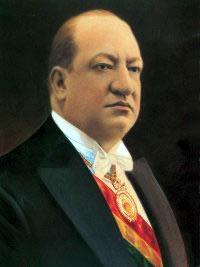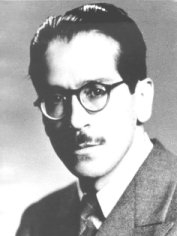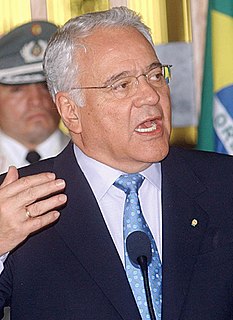
José Luis Tejada Sorzano was a Bolivian lawyer and politician appointed by the military as president of Bolivia during the Chaco War. He had previously been the country's Vice-President for three years.

Hernán Siles Zuazo was a Bolivian politician who served as constitutionally elected president twice, from 1956 to 1960 and again from 1982 to 1985. He also briefly served as the temporary president in April 1952, and as vice president between 1952 and 1956.

The Christian Democratic Party is a progressive Christian-democratic political party in Bolivia.

General elections were held in Bolivia on 18 December 2005. Evo Morales of the Movement for Socialism (MAS) party was elected President of Bolivia with 54% of the vote, the first time a candidate had received an absolute majority since the flawed 1978 elections. Morales was sworn in on 22 January 2006 for a five-year term. The MAS also won a majority of seats in the Chamber of Deputies and emerged as the largest party in the Senate.

General elections were held in Bolivia on 30 June 2002. As no candidate for the presidency received over 50% of the vote, the National Congress was required to elect a President. Gonzalo Sánchez de Lozada was elected with 84 votes to the 43 received by Evo Morales.
The Nicaraguan Constitutional Assembly election of 1947 was held on 3 August.

General elections were held in Bolivia on 1 June 1997. As no candidate for the presidency received over 50% of the vote, the National Congress was required to elect a President on 4 August. Hugo Banzer of Nationalist Democratic Action (ADN) was subsequently elected. Whilst the ADN emerged as the largest party in Congress, it failed to win a majority of seats, and formed a coalition government with the Revolutionary Left Movement, Conscience of Fatherland and the Civic Solidarity Union.
The Socialist Republican Party, whose members were also known as "Saavedristas", was a political party in Bolivia. The Socialist Republican Party emerged on January 28, 1921, as the Republican Party was bifurcated on the same day Bautista Saavedra took office as President of the country. The Socialist Republican Party was formed by Saavedra's followers.

General elections were held in Bolivia on 7 May 1989. As no candidate for the presidency received over 50% of the vote, the National Congress was required to elect a President on 6 August. Although the Revolutionary Nationalist Movement had received the most votes, its candidate for President Gonzalo Sánchez de Lozada was defeated by Jaime Paz Zamora of the Revolutionary Left Movement (MIR) in the Congressional vote, despite the MIR only finishing third in the public vote.

General elections were held in Bolivia on 6 June 1993. As no candidate for the presidency received over 50% of the vote, the National Congress was required to elect a President on 4 August. Gonzalo Sánchez de Lozada of the Revolutionary Nationalist Movement–Revolutionary Liberation Movement Tupaq Katari alliance was subsequently elected unopposed.

General elections were held in Bolivia on 1 July 1979. As no candidate in the presidential elections received a majority of the vote, the National Congress was required to elect a President. However, the Congress failed to elect a candidate after three ballots, and instead selected Senate leader Wálter Guevara to serve as Interim President for a year on 8 August. Guevara was later overthrown by a military coup led by Alberto Natusch on 31 October. Fresh elections were held in June 1980.

General elections were held in Bolivia on 14 July 1985. As no candidate for the presidency received over 50% of the vote, the National Congress was required to elect a President on 4 August. Although Hugo Banzer of Nationalist Democratic Action received the most public votes, Congress elected Víctor Paz Estenssoro of the Revolutionary Nationalist Movement.

General elections were held in Bolivia on 6 May 1951. Víctor Paz Estenssoro of the opposition Revolutionary Nationalist Movement (MNR) received the most votes in the presidential election, but as he did not obtain an absolute majority, the National Congress was constitutionally obliged to elect a President on 6 August from the three candidates who received the most public votes. However, on 16 May a military junta assumed responsibility for the Government with Brigadier General Hugo Ballivián as President.
Bolivia held a parliamentary election on 13 March 1938, electing a new Constituent Assembly, 1938–1939.
Bolivia held a parliamentary election in May 1933, electing a new National Congress.
Bolivia held a parliamentary election on 1 May 1928, electing a new National Congress.
Bolivia held a general election on 1 December 1925, electing both a new President of the Republic.
Bolivia held a general election on 2 May 1925, electing a new President of the Republic, but the results have since been nullified.
Bolivia held a general election on 4 May 1913, electing a new President of the Republic.
The Genuine Republican Party was founded in Bolivia in 1921 by José María Escalier and Daniel Domingo Salamanca Urey following a split in the Republican Party.






